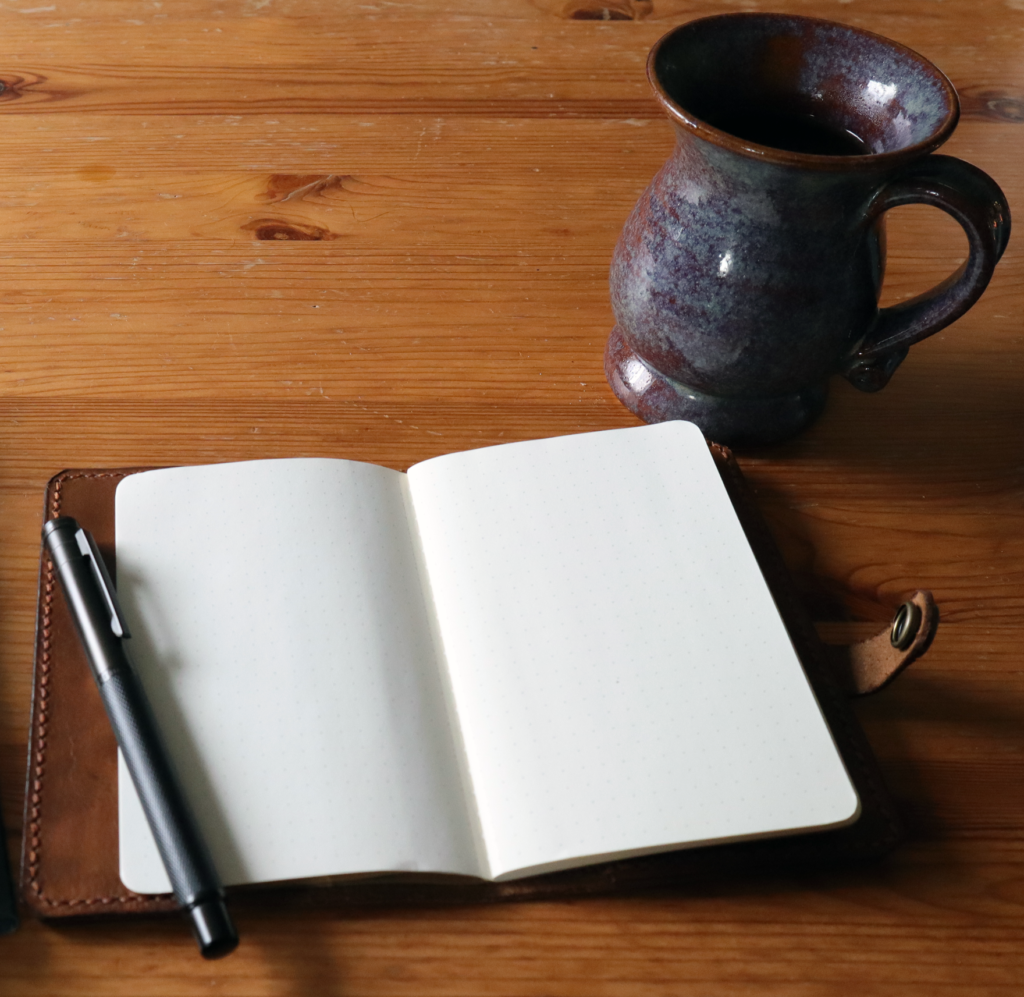The humble journal is a valuable tool. The journal, and its pragmatic cousin the ‘Commonplace Book’, have been used for millennia – the Stoic emperor Marcus Aurelius wrote his now famous ‘Meditations’ as a personal journal, rather than a treatise to be published, and inside it is buried countless insights he had collected over his life. I’ve spent many years trying to ‘optimize’ my own journaling experience – digital systems, bullet-journal templates, prompts, the works. Usually, in my quest for a perfect system I’ll use forever, I’ll try to use my journal for everything – to-do lists, weekly and monthly reviews, as a commonplace book, as a sketchbook. I like the idea of having big, meaty journals filled with a scattershot of my days, something I can leaf through in the future to get a nearly complete view of my day.

So this brings me to what journals are for – are they a tool for thought, or a tool for retaining information? I think this is one of the big differences between whether you use a notebook as a journal or a commonplace book. Historically, commonplace books have been used as a sort of mini personal archive, where one stored information – quotes, research, addresses, clippings – that they thought they might need in the future. Your hard drive, phone, and and digital notes are essentially a commonplace book, and keeping a paper version is certainly less efficient than keeping a digital one. That said, there are certain virtues that come with the restrictive nature of physical media. The act of writing or transcribing information is onerous enough that we’re selective with what we put in there, and the fact that information is harder to cut, copy, move, and edit once its in there also adds a certain permanence. It’s sometimes hard to find things, unless you put in considerable effort to index it, and so you need to leaf through it and explore it, which can lead to you finding something else entirely. With modern search we’re often pointed directly to our target, but when we have to hunt, we can often find some creative combination of information that happened by coincidence, sharing only a page or a date in common. These messier, clunkier systems often pave the way for a creative serendipity, and the fact of their inefficiency also often causes us to more carefully cultivate what we put in. There is a certain pleasure to writing in a physical book, as well, and in my own experience I find the experience of writing in a paper journal very distinct from a digital one.
Lately I’ve been journalling a lot more again. In my experience it seems to come in phases, a few weeks or months where I’m diligent, then I’ll stop for months more. As usual I felt the compulsion to try to ‘systematize’ it, come up with some optimized method – that desire naturally pushed me towards digital journaling, where I can quickly deploy filters, templates, synthesize data and perform and lightning fast searches. And these things are all great, and certainly appealing, but I still felt an itch to do it on paper. I knew the cost of this was that my future self would not have this indexed, organized system to review my past-self’s musings, but I also realized that in my many years of journaling, I’ve probably spent a sum total of two or three hours re-reading my past entries. Occasionally I’ll flip through them at random, but never with an end in mind, and never to find something important that I need – that information now gets stored digitally. No, instead my perusing of past-me’s writing was just to casually glimpse back in time and see what kind of stuff I thought was worth writing down that day in 2015, what bothered me, what I was excited about, what I was thinking about. Sometimes the mundane stuff was my favourite to read, strangely enough. I had always viewed my journal as something of a historical record for future me – to see how I was doing then, find out what I have in common with my past self, how I’ve improved, or maybe how I haven’t. This has a certain value, but more and more I’ve begun to consider the act of journaling the important part, not the product of it.
So, my latest journal ‘system’ is composed of grid paper in a binder. I chose a binder so that I didn’t feel precious about page usage, like I might in a nice, fancy, leather-bound tome – though I did spare the effort to make myself a fancy, leather-bound binder. I also did this so that I could easily remove or insert things as needed, and not need to worry about whether I was capturing it ‘in the right place’. When the binder is full, I yank all the pages out and toss them in a larger binder on my shelf. In the mornings I sit down outside and write as much as I feel like – it usually ends up around a page, and often the information is mundane and similar. When I woke up, how well-rested I feel, whatever comes to mind, and sometimes a quick little to-do list – but the real to-do list is in Notion, and any new items are added into that system if I didn’t get them done by the end of the day. Since it’s a binder, I threw together a little pen holder in the loops that I keep highlighters in, and (because I have a problem) I devised a basic color code:
- Green – Achievement
- Orange – Task
- Blue – Idea
- Pink – Problem
- Yellow – Misc
The exercise here is to put thoughts into words, freely at first without any consideration to my color code or what order I write things down into. Then – sometimes – I’ll give it a quick read-over and color code it. If I’m seeing a lot of green, that’s good. If I’m seeing a lot of pink, maybe something needs fixing. I like this color-coding method for a similar reason that I liked Tiago Forte’s method for taking notes called ‘The Progressive Summarization Technique’. Essentially, I’m summarizing my thoughts by writing them down, and then summarizing the most important parts of that by highlighting them. I feel more free to write down whatever I want in the first step, knowing that the highlight step will cut out the useful bits and give me a bit of an idea for my day. The intention isn’t to ‘work’ from this notebook, anything important I try to ensure is put into my Notion system, because I have no intention of re-reading all my entries looking for my tasks – though I do make an effort to flip through them at the end of the week or month. The highlights capture a good ‘gist’, even if I don’t read the content the colors give me a sense of mood – thoughtful? Action-oriented? Problem-oriented? Successful?
So, this system turns out to produce a document that’s actually fairly convenient for future-me to quickly parse, but that’s no longer the goal, just a pleasant side-effect. This writing and highlighting is mainly an exercise for the me of today, as a way to think. By codifying nebulous thoughts onto paper, the act of writing them out makes them something real – by writing down and identifying achievements, ideas, tasks and problems you train yourself to do exactly that. You hone your mind to look for these things, to make note of them, and not let them just slip around in the messy washing-machine of thoughts in your head. I find, as well, once I’ve written down a problem, it’s a cue to my subconscious to start working on it – it’s amazing how often a solution will present itself when I sit down to write in the evening or the next morning. I’m more than happy to write down questions I don’t have answers to, even if I don’t intend to try and answer them, as a mental cue to subconsciously churn it.
Is this the perfect journaling system? No, certainly not, and the more I journal the more I realize that such a perfect system doesn’t exist. The value of a journal, especially a paper one, is not its perfection as a historical record or its utility as a to-do list. There are better tools for that. What makes a journal or commonplace valuable is, in a way, its imperfection. Its slapdash nature, its free and open low-pressure format, the freedom to muse and explore, these are what can give a journal an edge over more systematic tools. If you’ve ever found journaling to be too much pressure, or never been able to be consistent with your ‘method’, I encourage you to embrace the chaotic nature, and view your journal as a tool for the you of today, not your future self. You’ll find both your present and future selves better off for it.

